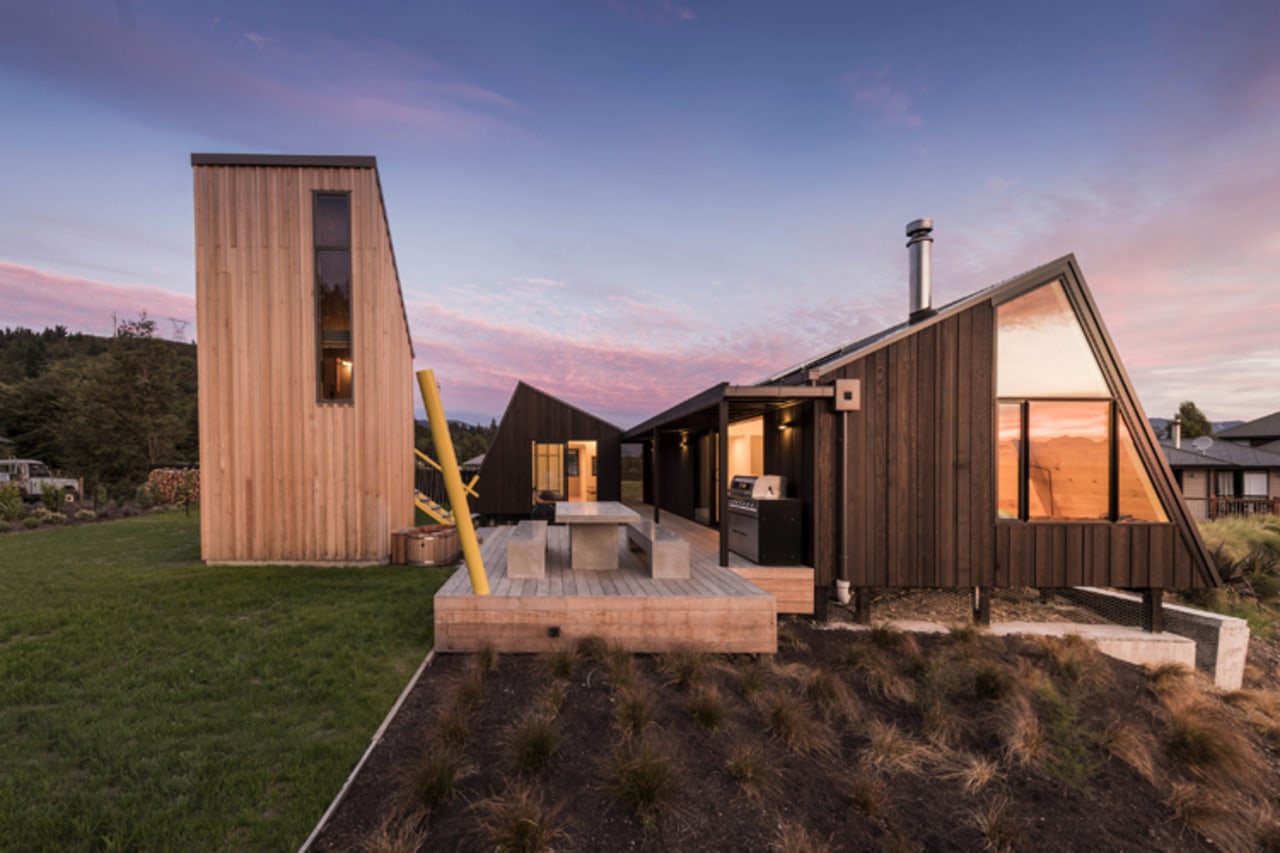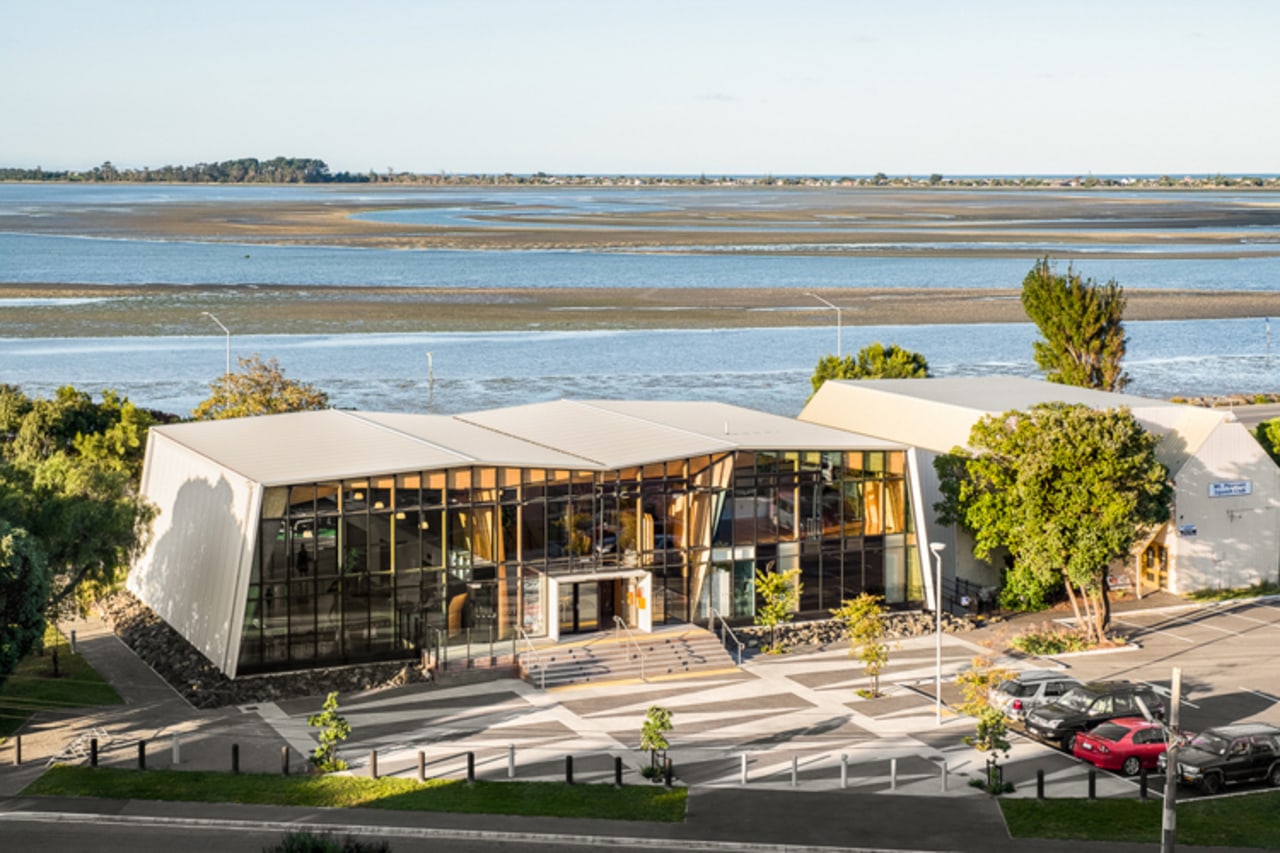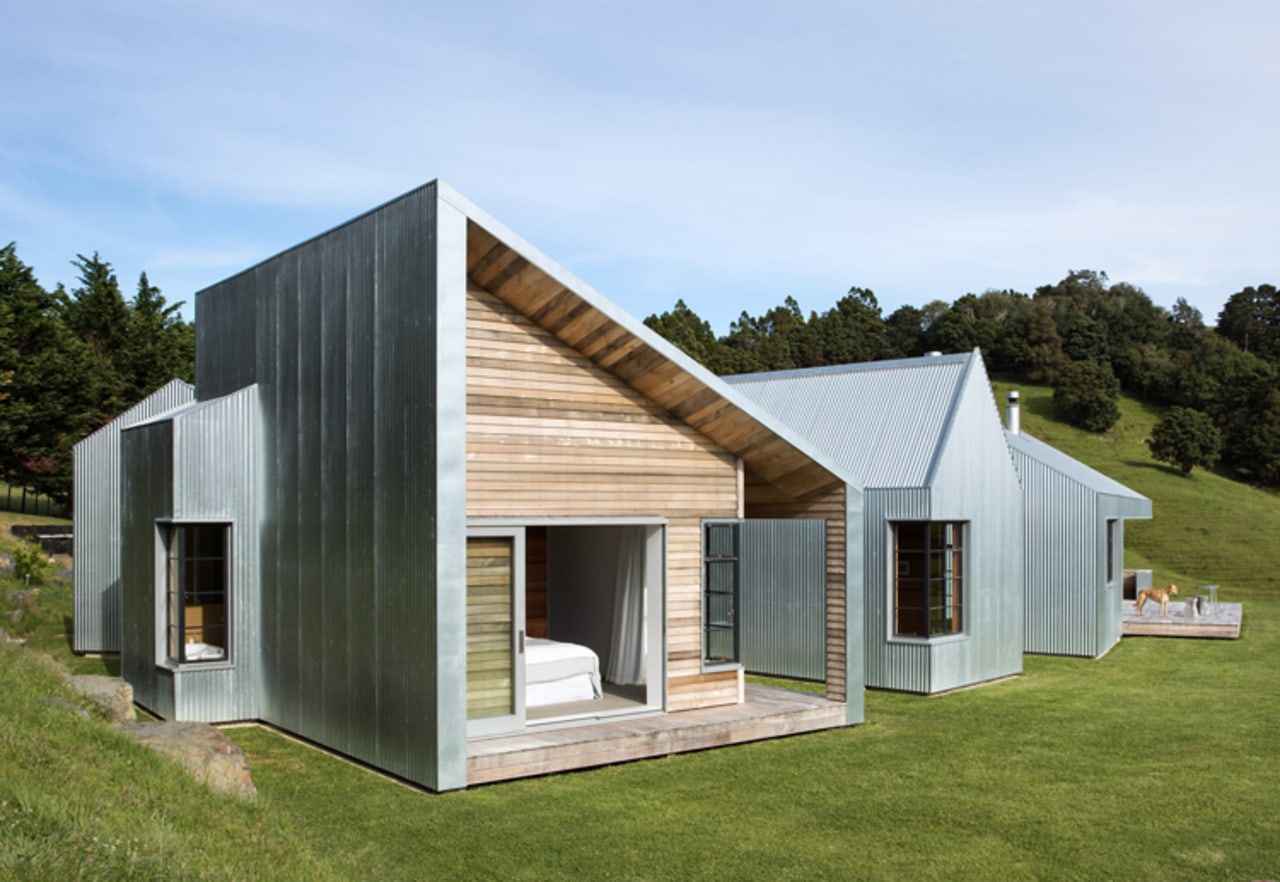Winners announced for NZ Wood-Resene Timber Design Awards 2018
Timber industry and design professionals were honoured for their creativity and ingenuity at a gala event in Auckland on 20 September. Entries in the 2018 NZ Wood-Resene Timber Design Awards demonstrated new and different ways to use timber that nevertheless meet all building codes and criteria as well as being beautiful.
The winners in the categories:
RESENE SUPREME AWARD:
He Tohu Document Centre : Studio Pacific Architecture
RESIDENTIAL ARCHITECTURAL EXCELLENCE: Sponsored by Carter Holt Harvey Woodproducts NZ
For the innovative use of timber, resulting in a distinctive visual impact on a residential building, either stand-alone or multi-unit/multi-storey project.
Judging Criteria: Solution to complexity; Engineering design; Material selection; Context, Built Form and Amenity; Innovation; Aesthetics; Environmental sustainability.

COMMERCIAL ARCHITECTURAL EXCELLENCE: Sponsored by TimberLab Solutions Ltd
For the innovative use of timber resulting in a distinctive visual impact on a commercial, industrial, or public building environment.
Judging Criteria: Solution to complexity; Engineering design; Community Impact/Visibility; Material selection; Context, Built Form and Amenity; Innovation; Aesthetics; Environmental sustainability.

ENGINEERING INNOVATION: Sponsored by NZ Timber Design Society
For the innovative use of engineered timber, resulting in a distinctive technical/ structural impact on a residential, commercial, industrial or public building environment.
Judging Criteria: Solution to complexity; Engineering design; Innovation; Aesthetics; Environmental sustainability.

EXCELLENCE IN ENGINEERED WOOD PRODUCTS: Sponsored by Nelson Pine Industries Ltd
For the innovative use of EWP’s, resulting in a distinctive impact of the EWP properties and/or aesthetics on a residential, commercial, industrial or public building environment.
Judging Criteria: Material selection; Solution to complexity; Innovation; Engineering Design; Aesthetics; Environmental sustainability

MULTI STOREY TIMBER BUILDING AWARD: Sponsored by XLam NZ Ltd
At least 3 floors where the predominant structural material is wood or a wood-based product. These floors may be built upon one or more floors of new or pre-existing buildings constructed from other materials.
Judging Criteria: Because this is a new award we are not defining further aspects of the award, but will leave it to the expert judges to decide the relative merits of extra height, gravity load and lateral load resisting systems and innovative construction systems.

INTERIOR INNOVATION: Sponsored by Niagara Timber Products
For innovative use of wood or a wood panel product as a signature feature, in a predominantly wood building, adding ambience, flair and practicality.
Judging Criteria: Material selection; Context, Built Form and Amenity; Innovation; Aesthetics; Architecture (interior); Environmental sustainability.
EXTERIOR INNOVATION & INFRASTRUCTURE: Sponsored by Taranakipine
For any wood or wood panel product that forms the exterior of or is an exterior structure, be it residential or non-residential which highlights the versatility and flexibility of wood while enhancing the structure’s aesthetic.
Judging Criteria: Material selection; Context, Built Form and Amenity; Innovation; Aesthetics; Environmental sustainability.
NZ SPECIALITY TIMBER AWARD: Sponsored by NZ Farm Forestry Association
The use of specialty timber in a manner that best highlights its unique characteristics. This category is open to entries from across the spectrum of NZ grown timber usage from furniture to buildings, facilities to objets d’art.
Judging Criteria: Material selection; Innovation; Aesthetics; Environmental sustainability.
WOOD & FIBRE CREATIVITY AWARD (REVISED): Sponsored by Scion Research
Original and innovative uses of wood fibre (solid wood, manufactured products) in unusual or unexpected applications which make great use of the fibre properties, e.g. tiny house design gems, chemical or process innovations.
Judging Criteria: Original and innovative uses of wood fibre (solid wood, manufactured products) in unusual or unexpected applications which make great use of the fibre properties.
INNOVATION OF STUDENT DESIGN AWARD: Sponsored by Juken NZ Ltd
The best three designs selected from each University will be chosen from submitted work presented in their courses.
Judging Criteria: Three projects by third year students will be nominated by each academic program for architecture and/or engineering (Victoria, Auckland & AUT). The Timber Design Award Judges will select the final winner. The winning student will receive $1000 prize money.
“In a market crowded with grand designs and wonderful claims for every construction material, New Zealand timber is proving just how versatile and cost effective it is,” says Wood Processors and Manufacturers Association Promotions Manager Debbie Fergie. “These Awards have again proved how imaginative design and structural integrity can combine to deliver beautiful timber buildings.”
Judges agreed. “The finalists all share a love of expressing timber in its architectural applications,” they said. “The real stand-outs were those that went a step further, displaying a mature professional approach, an evocative sophisticated outcome, or a surprising twist.”
Entrants competed within ten categories covering everything from residential and commercial architectural excellence to engineering innovation, multi-storey construction and student innovation.
Structural performance and aesthetic excellence were highlighted across all categories.
The Resene Supreme Award went to the iconic He Tohu Document Centre within the National Library, inspired by the form and function of a waka huia (treasure container). “This is the perfect vessel to display the founding documents of Aotearoa,” said the judges. “Highly developed manufacturing technologies are woven together with traditional timber materials, showcasing how timber can deliver technological, social and cultural value in a beautiful way.” This entry also won the Niagara Timber Products’ Interior Innovation category.
Runner up was Cymon Allfrey’s Family Bach in Hanmer Springs. “An interesting redefining of the family bach as a series of separate yet interrelated buildings with shared common spaces,” commented judges. “A building where architecture hero’s wood, and wood has hero’d architecture.” This entry also won the CHH Woodproducts’ Residential Architectural Excellence Award.
The South Island again garnered the bulk of winning entries. Five winners or highly commended entries featured Canterbury builds, and Kaikoura, Nelson and Otago projects also won awards - proving that not everything good comes only from “north of the Bombays.” The Auckland region and Wellington shared honours with five awards each, and Waikato was awarded three.
The XLam NZ Multi-Storey Timber Building Award is a new category, requiring entrants to submit projects at least three stories high. This was won by Te Pa Tauira-Otago Polytechnic Student Village in Dunedin. It was the first five-storey all-timber building in the country, with judges pointing out that the highly efficient modular layout enabled efficient offsite prefabrication which significantly reduced construction time, minimised waste and reduced cost. They also believed this building will help to positively shape the attitude of a new generation towards timber.
Commended in this category was the three-storey Ara Kahukura, designed as much as a living example of sustainable design as to provide teaching spaces. The building is an excellent testimony to the potential for hybrid timber-steel-concrete structures, said judges.
Keynote speaker at the Awards was Dr Helen Anderson, QSO. Helen has a PhD in seismology from the University of Cambridge and 16 years of active research experience as a seismologist. She has both a professional and personal commitment to designing and building for the future, especially concerning the resilience of buildings in disasters, and how we manage risk from our heritage buildings. Currently she is chair of the Building Research Association (BRANZ), Scion Research, MBIE’s Building Advisory Panel, and a Director of five other major organisations.
Judges were universally delighted with the standard of entries.
“The 2018 NZ Wood-Resene Timber Design Awards showcase some of the best examples of innovation in timber design that New Zealand has to offer,” they said. “It’s evident there is great collaboration between architects, engineers, suppliers, fabricators and builders to produce some outstanding and highly innovative timber buildings and structures.”
“The remarkable achievements of all contestants show how wood is the perfect material to deliver more sustainable and resilient buildings,” they added. “It's fantastic to see the growing use of local products such as CLT, glulam and LVL in a broader range of applications with some stunning results.”
The four judges included Pamela Bell M.Arch., Founder and Chief Executive of Prefab NZ who brings experience in architecture, Olympic-level sport, small business development, governance and management to the group. David Carradine Ph.D, is a Structural Engineer at BRANZ and President-Elect of the NZ Timber Design Society. Tim Melville B.Arch, FNZIA is a Principal with Warren and Mahoney and President-Elect of the NZ Institute of Architects, and Andrea Stocchero, M.Sc in Architecture from the Università IUAV di Venezia (Italy) is Scion’s Sustainable Architect.
See more here www.nzwood.co.nz
Story by: Trendsideas
Home kitchen bathroom commercial design
Diving into nature
Classic looks, contemporary efficiency
Personality plus


















